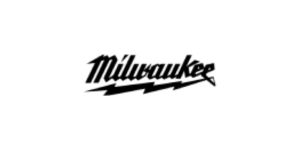At Maine Treekeepers LLC, we specialize in managing the most common fungal and bacterial diseases affecting trees across the Midcoast region. Whether you’re caring for ornamental trees, fruit trees or your forest species, early detection and proper treatment are key to long term health. In this guide we’ll cover how to identify and manage several prevalent diseases in our area including: Apple scab, Beech Leaf Disease, Beech Bark Disease, Dutch Elm Disease, Oak Anthracnose, Powdery Mildew, Rhizosphaera Needle Cast & White Pine Blister Rust.
Apple Scab
Cause: Venturia Inaequalis (a fungal pathogen).
Primary Hosts: Apples, Crabapples, Hawthorn, Mountain Ash and other members of the rose family.
Symptoms to Look For:
- Early- stage: light green leaf spots turn olive and velvety.
- Leaves may curl, pucker and drop prematurely.
- Fruit develops circular olive lesions that become scabby and cracked.
- Blossoms can show greenish lesions on petal bases and flower stems.
Consequences:
- Premature defoliation though not usually fatal can lower fruit production/quality the following year,
- Creates conditions that are right for secondary pest and infections.
Apple Scab Management Options:
Cultural Practices
- Prune to improve air circulation.
- Rake and dispose of fallen leaves in Autumn.
- Avoid overhead watering, which can encourage fungal growth.
Fungicide Options:
- Conventional: Captan, sulfur or copper-based fungicides (Cueva fungicide concentrate is omni rated) can be applied preventively before or at bud break; repeat during the season as needed.
Organic Treatment- Dolomitic Lime:
- Raises Soil PH, creating unfavorable conditions for fungal spore survival.
- Acceleration breakdown of leaf litter, reducing fungal inoculum.
- Promotes healthier soil and overall tree resistance
Beech Leaf Disease (BDL)
Cause: Beech leaf disease is caused by a foliar nematode Litylenchus crenatae. First detected in Ohio, this invasive pathogen has been rapidly spreading through New England, including Maine.
Symptoms to Look For:
- Dark banding between leaf veins.
- Thickened, leathery leaves.
- Leaf distortion or curling.
- Bud abnormalities.
- Reduced vigor and growth.
- Young trees may die within 2-7 years, while mature trees can slowly decline over time.
Beech Leaf Disease Management Options:
At Maine Treekeepers LLC, we use an organic treatment called Polyphosphate 30 (Potassium phosphate). Polyphosphate 30 is one of the few organic nematicide options on the market today.
How it works: It boosts overall tree health and suppresses nematode activity. Its applied as a soil drench with the dosage based off the DBH (diameter at breast height) and should be applied once in June and then again in July.
Fungicide treatment options
- Fluopyram, a duel fungicide/nematicide which is a foliar spray, ideally timed with nematode migration in the late summer to early fall. NOTE: while it won’t reverse current leaf damage, it may reduce symptoms the following season.
- Arbor-jet Tree Injection: Arbor OTC (Thiabendazole), a fungicidal injection to reduce progression, best applied after full leaf out from mid-June through early August. This may need to be reapplied every two years to remain effective. NOTE: This is not a cure, but it can help slow decline.
Beech Bark Disease
Cause: This is a 2-stage disease involving insect and fungal pathogens.
- Step 1: Beech Scale Insect Infestation (Commonly found in bark cracks and crevices; infestations can coat the trunk with a woolly coating on the bark.)
- Appearance: Small yellow bodied insects covered in white, woolly wax.
- Damage: Feeds on bark, creating entry points for fungal infection.
Step 2: Neonectria Fungal Infection (Cankers)
Symptoms:
- Orange, sunken cankers with rough edges.
- Reddish-brown sap exuding from wounds.
- Small red fruit bodies (perithecia) visible on the bark in the fall.
- Thinning crown, yellow leaves, branch dieback.
- In severe cases, trunk or limbs may snap at canker points.
Beech Bark Disease Management Options
- Physical Removal
- Use a strong water stream or a soft brush to remove scale insects from young trees.
- Insecticide option
- Dormant oils or insecticidal soaps can reduce scale populations during dormant season.
- Chemical and Organic Soil Treatments:
- Products such as Agrifos, ProPhyt, or Polyphospate 30 (used by Maine Treekeepers LLC) are used as a trunk injection or a soil drench.
- Systemic Insecticide Injections:
- In severe ornamental infestations, systemic insecticides can be injected to target insects beneath the bark. Maine Treekeepers LLC uses an organic product called TreeAzin to fight the invasive pest called beech leaf- mining weevil. Which feeds on the beech leaves causing significant defoliations.
Dutch Elm Disease (DED)
Dutch Elm disease (DED) is one of the most destructive diseases in North America. In Maine, this aggressive vascular wilt has devastated populations of native elm trees, especially the iconic American Elm. If left untreated DED can rapidly kill mature elms, spreading quickly through beetles and interconnected root systems. Commonly affected elm species in Maine include the American, Winged, Slippery, Rock and September elm.
Cause: DED is caused by two fungal species:
- Ophiostomo novo-ulmi (most aggressive and widespread)
- Ophiostomo ulmi (less common and milder)
These fungi block the trees vascular system, preventing the movement of water and nutrients. This internal clogging causes the tree to wilt, weaken, and eventually die.
- Elm Bark Beetles (Primary Vector), carry fungal spores from infected trees to healthy ones. When they feed on the bark of a healthy elm, the fungus enters the trees vascular system. Both the native Elm Bark Beetle and European Elm Bark Beetle are vectors.
- Root Graft and transmission- the roots from adjacent elm trees can naturally graft together underground. The fungus can move through those root connections from an infected tree to a healthy one. This often causes multiple trees in a row to die successively.
Symptoms of Dutch Elm Disease
- Wilting or yellowing leaves, often on one side of the crown.
- Premature leaf drop- leaves may fall off in the early season.
- Brown streaking in the sapwood under the bark.
- Progressive branch dieback.
- Entire canopy death in advanced cases.
Dutch Elm Disease Management
- Sanitation and tree removal
- Promptly remove infected trees or branches.
- Chip, burn, bury infected wood, or cover it with a tarp to kill the beetles.
- Always disinfect tools with bleach or alcohol after pruning infected elms.
- Root Graft Disruption
- Use trenching or mechanical plowing to sever shared root systems.
- Prevent the disease from traveling underground between neighboring trees.
- Preventative Fungicide Injections
- High value or historic elms can be protected with Fungicidal injections. Arborjet is a commonly used injection system, needing to be repeated every 1-3 years to maintain effectiveness.
- Elm Bark Beetle Control with TreeAzin
- TreeAzin is a systematic insecticide derived from neem tree extracts; this is not a direct cure for Dutch Elm Disease but is effective in targeting beetles. This insecticide is injected into the vascular system, TreeAzin deters feeding and reproduction. This is the safe organic certified option, ideal for high value or heritage trees.
Oak Anthracnose
Oak anthracnose is a fungal disease that affects oak trees-especially during cool, wet springs. Caused primarily by Apiognomonia errabunda, a group of vigorous fungi. This disease impacts leaf health and can lead to twig dieback, premature defoliation, and reduced tree vigor. Well usually not fatal to mature oaks, repeated infections can weaken young or stressed trees, making them vulnerable to other pests and pathogens. That’s why early identification and proactive care are key.
Symptoms of Oak Anthracnose
- Leaf spots and blotches- irregular brown or black patches on new leaves.
- Twig dieback- often seen in the upper canopy.
- Premature leaf drop- leaves may fall off in the early season.
- Wilting- young, infected leaves and twigs may drop and dry out.
- Blight-like appearance- Infected foliage may look scorched or sunburned.
Oak Anthracnose Management
- Cultural Controls
- Pruning- Remove and dispose of dead or infected twigs and branches, especially low hanging ones close to the ground.
- Sanitation- Rake and discard fallen leaves and twigs during the growing season and in the fall to reduce fungal spore sources.
- Proper watering- avoid overwatering; ensure good drainage to prevent prolonged leaf wetness.
- Spacing and air flow- ensure proper tree spacing to allow sunlight and air flow, helping foliage dry faster.
- Mulching- apply mulch around the base of the tree to retain moisture and protect roots – but keep mulch away from the trunk.
- Curative treatments
- In severe cases, fungicides may be injected into the vascular system or applied as a foliar spray to control existing infections.
- Organic Fungicide Options – Most effective when used preventatively or in cases of chronic infection. Apply fungicide at bud break and repeat weekly or biweekly until warm, dry weather sets in.
- Liqui-Cop (Copper Fungicide)
- Copper Soap (Cueva fungicide concentrate is omni rated)
- Sulfur Dust or Spray
- Dolomitic Lime (to raise soil PH and suppress fungi activity)
- Bioprotectant (microbial products that compete with fungi pathogens)
Powdery Mildew
Powdery mildew is a common fungal disease that affects a wide variety of plants-including flowers, shrubs, trees, vegetables, and fruit. It’s easily recognized by its white, powdery coating that forms on leaves, stems, and sometimes fruit. While often unsightly, powdery mildew rarely causes severe damage, especially if managed early.
Cause: This disease thrives in warm, dry conditions with temperatures between 60 and 80°F. Despite the dryness, high humidity encourages spore formation. Shady areas with poor air circulation, overcrowded plants, or excessive nitrogen fertilization can make the problem worse.
Symptoms of Powdery Mildew
- White or Gray powdery patches and leaves, stems, flowers, or fruit.
- Distorted or yellowing leaves
- Premature leaf drop- leaves may fall off in the early season.
- Stunned growth or reduced flowering
- On fruits like grapes, you may see web like scarring or quirky lesions.
Powdery Mildew Management
- Cultural Controls
- Plant disease resistant varieties when available.
- Ensure proper spacing and air flow between plants.
- Avoid overhead watering and instead water at the base.
- Prune affected areas and dispose of infected plant debris.
- Apply a balanced fertilizer; avoid overusing nitrogen.
- Organic and Chemical Control
- Use fungicides containing sulfur, neem oil, or copper-based compounds. For best results apply treatment at the first sign of symptoms. Reapply according to label instructions, especially during conditions favorable to the disease.
Rhizosphaera Needle Cast
Cause: Rhizosphaera needle cast is a fungal disease primarily affecting spruce trees-most commonly Colorado blue spruce and other non-native spruces growing outside their natural range. Caused by the fungus Rhizosphaera kalkhoffii, this disease leads to needle discoloration, premature needle drop, and if left unmanaged, branch dieback or even tree death in severe cases.
Symptoms of Rhizosphaera needle cast
- needle discoloration-infected needles turn yellow, then reddish brown or purple and eventually brown.
- Bare branches-trees may appear thin or defoliated from the bottom up.
- Fruiting bodies(pycnidia)- tiny black specks may be visible on affected needles with a magnifying glass-these are the spore producing structures of the fungus.
- Disease progression-moves upward and outward through the tree over time.
Rhizosphaera needle cast Management
-
- Cultural Management
- Prune and dispose of infected branches and fallen needles – do not compost.
- Improve air circulation by avoiding tight planting and prune nearby vegetation.
- Water during drought to reduce stress – avoid overhead watering.
- Mulching- apply mulch around the base of the tree to retain moisture and protect roots – but keep mulch away from the trunk.
- Fertilize is needed to support overall tree vigor.
- Fungicide Treatment- Fungicides do not cure existing infections but can protect new needle growth when applied correctly. Timing is crucial, begin application in spring when new needles are half elongated. Repeat every 3-4 weeks the growing season.
- Cultural Management
- Effective fungicides: Chlorothaonil, Copper- based fungicides (Cueva fungicide concentrate is omni rated), Thiophanate-mythyl, Macozeb. Ensure thorough coverage of all needles especially on large trees.
- Due to the complexity of treatment, hiring a professional tree service like Maine Treekeepers LLC can ensure proper timing, product choice and application.
White Pine Blister Rust (WPBR)
White Pine Blister Rust (WPBR) is a devastating fungal disease that targets 5 needle white Pines, including the iconic Eastern White Pine commonly found in Maine. Caused by the invasive fungus Cronartium ribicola, WPBR was introduced to North America from Europe in the early 1900s and it has since caused widespread mortality among native pine populations.
Symptoms of White Pine Blister Rust
- Yellow to reddish spots on needles.
- Premature needle drop.
- Small black specks within discolored needle areas.
- Canker Formation – As cankers mature, they can disrupt the flow of water and nutrients leading to branch dieback.
- Spindle-shaped swelling on branches.
- Margins of cankers may appear greenish-yellow to orange.
- Diamond shaped cankers may form on the trunk.
- Resin flow from infected branches or canker.
Spring Spore Production
- Infected areas may develop orange blisters in spring.
- These blisters rupture and release aeciospores, which infect nearby Ribes (currents and gooseberries). Ribes are recommended for removal (if practical) within 1,000 feet of white pine trees. Removing these hosts can greatly reduce the risk of infection.
Cultural Management
- Plant in well-drained soil with good air circulation.
- Avoid planting white pines near Ribes, which are the alternate host for the fungus.
- Ensure adequate spacing between trees to promote air flow and reduce humidity around foliage.
- Avoid overhead watering, as wet needles increase the chance of fungal infection.
Maine Treekeepers- Caring for the Earth, One Tree at a Time.






